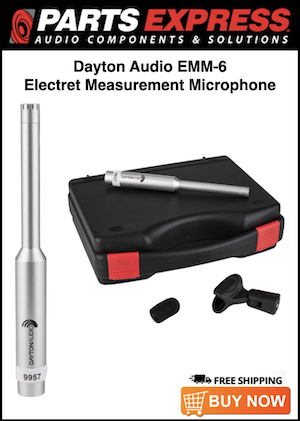Playing catch up here.
No news, of course, and it has been referred to already, that the HRTF (hearing response transfer function) is a big factor with in-ear or on-ear or around-the-ear ANYTHING.
Interesting to me is the fact that with regular loudspeakers (or with hearing in general) the HRTF (via the outer and middle ear) is in the chain of what we are hearing all the time, in fact serves a role in the brain's creation of imaging and a soundstage (what direction did that sound come from?),,and with headphones or IEMs it is not, or at least is to a much lesser degree. HRTF is the bridge between speakers and headphones, it compensates a headphone's response to make its measurement have some equivalence with a speaker's measured response, and explains why a flat headphone response (mic at the ear drum) will sound different from a flat speaker response (mic in a free field).
As pointed out, an in-ear mic would have to be really tiny and located in the plane of the ear drum to accurately capture sound like the ear.
Well I'm going to revive this thread because I've gotten myself into the rabbit hole that is David Griesinger's body of literature. I took a break from measuring headphones and trying to understand the source of the errors, it was pretty easy to figure that out, and decided to see what else I could use the EARS for. First I used it as the microphone for a video recording of my room as I walked around making sounds to see if it gave a cool effect. As it was Binaural with an HRTF, it should have given a perceived 3D sound and it did. Very cool!
Of course, that wasn't really a scientific study of any kind and there was nothing all that useful there so I decided to instead take 2-channel measurements of a room to see if I could begin to detect LF ITD, per David's work on LF spaciousness and listener envelopment. This has been hugely challenging, far worse than I thought, but... a) I'm making progress in actually measuring a rooms ITD by frequency band, and b) I am successfully making binaural measurements of a room, but I cannot use REW or any of REW's test tones to do this accurately.
What is so cool is that the elusive measurement needed by all of us is a measure of what we hear, not a single point measure of loudness. That is of limited value. Yet no measure like that currently exists, and certainly not one that is implemented in readily available software. This is getting closer. A cheap binaural microphone with an HRTF and a stereo recording of a log-sine sweep with reverb allows you to then create an impulse of the room and assess the rooms effect and interaction with the speakers on creating that sense of SS&I, spaciousness, envelopment, externalization of the source, etc. All things we can't normally measure at all.
I hope to turn all of this into a series of videos and articles, I'm working through it all now. A lot of the other ideas I had for tech articles hit walls and this just seems way more interesting. I think the hardest part is taking these ideas, which are hugely complex, and distill them into a simple and easy to understand set of concept. I think we all care about SS&I, Spaciousness, and envelopment, but I think the average person doesn't understand that they care about it. People don't want mono-sound, they know that, but yet the understanding of source azimuth is totally missing from an average persons vocabulary. That is the gap that we need to bridge.
Wayne if this interests you as much as me, and you want to help, I can certainly use it. I have a bunch of presentations on REW and acoustics coming up over the next 6 months and I hope to bring some of this in so that I can begin to really simplify these ideas and aid in writting the tech articles. I'd like to get the first of the articles out before the end of July.










